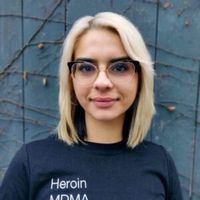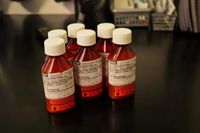Dr. Carl Hart’s book, Drug Use For Grown-Ups: Chasing Liberty in The Land of Fear could be this year’s most courageous, honest and refreshing perspective of how people engage, and develop a relationship with drugs. The book is loaded with mind-expanding insights that will certainly change how many perceive drugs and likely how people who use drugs will be perceived by broader society. As I read through Dr. Hart’s insightful challenges to popular assumptions and normalized judgements about drugs, what stuck with me the most was his commentary on harm reduction. Hart’s broader work is fundamentally about shifting the conversation about drug use away from its origins of racist propaganda to a science-based discussion about both the benefits and consequences of drugs. So it was no surprise that Hart’s primary concern with the phrase “harm reduction” is the emphasis on the negative consequences associated with drug use; and that the term is almost exclusively used in reference to drugs, specifically illegal substances. We need to embrace drugs themselves, relationships with drugs and the continuum of use in a holistic way. Dr. Hart mentions that every day, millions of people across the globe use drugs and do not suffer negative consequences. Dr. Hart qualifies his concerns about the term by stating that language shapes how we think and behave.
“We need to embrace drugs themselves, relationships with drugs and the continuum of use in a holistic way.”
Within popular discourse there exists a reductive focus on the undesired consequences of drug use. In reference to how information about drugs is circulated, Dr. Hart uses the analogy, “imagine if you were interested in learning about cars and there was only information on car crashes”, to draw a comparison between the disproportionate emphasis on drug-related harms rather than the reality of the more common harmless recreational use of drugs. Hart claims that the phrase harm reduction is misleading because it obfuscates the reality that most people use drugs to enhance experiences. Simply using drugs does not constitute harm to oneself. In order to progress the conversation about the potentialities of drug use, the phrase for safer use under prohibition would be more accurately termed in value neutral language. Dr. Hart powerfully demonstrates this when he claims “outside the drug world we don’t call it harm reduction, we call it common sense.”
The term harm reduction obscures so much more than a value neutral framing of drug use. Harm reduction also does not qualify the harms generated by stigma, stereotypes, microaggressions, and racism that affects people of color and marginalized folks with complex identities. The phrase also buries the liberatory philosophy and the ground breaking social movements that often guides the technical aspects of harm reduction. It is important to note that Hart only speaks to harm reduction in the pragmatic, such as the handing out of safe using gear, but even then, do physicians or nurses call it harm reduction when they use a new syringe on a patient?
“When these harms are seen through tunneled vision and benefits aren’t acknowledged, the harms will always outweigh the benefits because we don’t talk about the benefits.”
There are potential consequences of emphasizing the harms of drugs for people who engage in drug use. When these harms are seen through tunneled vision and benefits aren’t acknowledged, the harms will always outweigh the benefits because we don’t talk about the benefits. Dr. Hart claims that the term renders people who use drugs as inferior because when the harms of drug use are at the forefront, they seem to be the obviously more prominent outcome, and what feeble minded person would engage in such a dangerous hobby? Another issue with the common application of the phrase is that in regards to alcohol and cannabis, harm reduction isn’t explicitly named. For example, when we tell people to drink water while consuming alcohol, it’s not considered harm reduction, it’s something we may refer to as common knowledge amongst those who engage in the practice. In its selective application, harm reduction encourages a distinction between “bad” or “dangerous” drugs and the more accepted drugs within society. These constructed hierarchies themselves create the negative and the positive.
Dr. Hart began his discussion with the quote “the road to hell is paved with good intentions”. I interpret this as Hart recognising the initial benefits of the term harm reduction, but also acknowledging the discursive and subjective consequences of the term. Reducing drug related harms under prohibition is essential to keeping people alive, healthy and with a good quality of life, upholding everyone’s rights to have the right to have a secure life, liberty and the pursuit of happiness, but the principles and strategies of harm reduction are much more expansive than the term indicates. Dr. Hart does not claim to have an answer to the observations he has raised, and that he does not have authority to coin a new term for an entire field. Instead, he claims that we don’t need a new term when we have words such as “prevention” and “education”, but we do need a new way of referring to strategies to engage in drug-use that is flexible and recognizes the many benefits of the experience. Dr. Hart’s observations provide the foundation for a discussion on the ramifications of continuing to verbally over-emphasize the potential harms of drug use.
*Photos for sale or by commission by harm reduction photographer Nigel Brunsdon. Check out his website.




